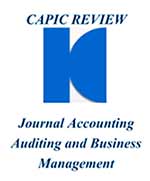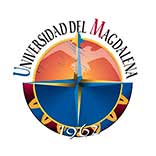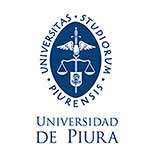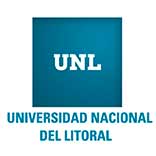Submission Preparation Checklist
As part of the submission process, authors are required to check off their submission's compliance with all of the following items, and submissions may be returned to authors that do not adhere to these guidelines.
-
1) I have read and reviewed the author guidelines for CAPIC Review, and my article/essay fully complies with them. Structure according to the type of submission, formats, length, metadata, etc.
-
2) The article/essay is original and unpublished, and it has not been submitted to any other journal.
-
3) When uploading the text of the article or contribution, I have removed the authorship to ensure a blind review. (Once the article is reviewed, the system matches the article text with the corresponding authorships entered in the metadata.)
-
5) I completed the "Submission Metadata": the information of the authors and the keywords are in lower case (in Spanish and English) and arranged alphabetically, in English it maintains the alphabetical order of Spanish. (each time you enter one press "enter" or "," and continue with the next one).
-
6) I have entered the Citations (bibliographic references) in the Metadata, alphabetically ordered by author, and they are in APA Sixth Edition format. (They are entered or copied one by one, pressing "Enter" after each one.)
-
4) If I have used artificial intelligence (AI) tools such as (LLM) and/or (GPT), I understand that they cannot be considered authors. Therefore, in an ethical approach, I have carefully cited and referenced their usage in my article/essay.
-
7) I am aware that my article/essay will be returned indicating which element(s) (1, 2, 3, 4, 5, 6) were not properly completed (keywords, abstract, authors, references, structure according to the type of submission).
Author Guidelines
II.1 The Contribution Format: Research Articles.
a) Research Articles. Its total length should not exceed 5000 words with Time New Roman 12. It begins with the title, which must be concise and informative, presented in Spanish and English. Its maximum length must be 15 words, it must not include abbreviations, neologisms or formulas. Once the article is accepted under the title must be the name of the author (s), who will be identified by their name, surnames, paternal and maternal, and at the foot of the page it will be indicated for each author, their University / organization, Faculty / academic unit, city and country, email @electronic. We continue with the following sections, using Time new Roman (12), capitalized and centered, subsections in bold, left aligned.
b) RESUMEN AND ABSTRACT. Each one in no more than 250 words and will include four paragraphs, the first with the theoretical background, in a second the purpose, objectives and scope of the investigated problem, the third paragraph with the methodological aspects such as the approach and techniques to study the problem and conclude with a paragraph with the results and discussion of the main findings. At the end of the RESUMEN and the abstract, between 3 to 6 keywords and palabras claves should be included, listed in alphabetical order.
c) INTRODUCTION: It must contain a problem statement, theoretical framework, justification for the study, objectives, formulation of hypotheses or conjectures and structure of the document.
d) METHODOLOGY, MATERIAL AND METHODS: The information collected, the populations under study and the methodology used are briefly described. The description must be brief and explicit enough for eventual reproduction of the results. In investigations that consider quantitative aspects, the design must include the base information of the applied statistical analysis.
e) RESULTS. The research findings will be described without discussing their meaning. Whenever possible, quantitative evaluations of their results will be presented together with information from the main statisticians.
f) DISCUSSION AND CONCLUSIONS OF THE RESULTS. This section contains the conclusion derived from the results, your discussion should focus on the interpretation of the results achieved and, if appropriate, contrast it with those obtained by other authors. The author can, with foundations, speculate based on his results and propose research lines.
g) BIBLIOGRAPHIC REFERENCES. It is organized alphabetically with French indentation, each title will include: Surname and initials of the name of all authors in capital letters separated by commas, year in parentheses, full name of the article. Bibliographic references will be made using the APA Sixth Edition format.
h) ANNEXES. If there were.
i) Tables, charts and figures (graphs, diagrams, drawings, photographs, among others), left and top alignment with Arabic numerals in the order that are mentioned for the first time within the text, (Table 1, 2…; Chart 1,2, ...; Figure 1, 2, Etc.) in the next line the respective title that must be brief, or clear and explanatory. Then the table, box or figure and under them, the “Notes” with a short and descriptive phrase that works both as an explanation of the figure and to give it a title. The source is also indicated here, including whether it is your own.
III.2 About format of other contributions: Essay
a) Essay: Its total length does not exceed 4000 words considering Time New Roman 12. Tables, tables or figures for all types of contributions, must be inserted in the work, only black and / or gray scale and consider Arabic numerals for tables, graphs, figures and illustrations. It will consist of the following sections, using Time new Roman (12), capitalized and centered, subsections in bold, left aligned.
b) Title page. It should be concise and informative, presented in Spanish and English. Its maximum length must be 15 words, it must not include abbreviations, neologisms or formulas. Under the title must be the name of the author (s), who will be identified by their name, surnames, paternal and maternal, and at the foot of the page it will be indicated for each author, their University / organization, Faculty / academic unit, city and country, email @electronic.
c) Summary and abstract. Each one in no more than 250 words. At the end of the abstract and the abstract, between 3 and 5 keywords should be included.
d) Introduction: You must clearly and precisely describe the approach to the topic you will develop, establishing a brief justification, revealing its objectives and structure.
e) Development: Must express the ideas of the bibliographic review and / or ideas, in order to give support to the topic that is being developed and clearly establish previous knowledge and / or professional experience in argumentation. Use of tables, charts, figures, etc. see II.1.i.
f) Final considerations: It should be according to the story of the essay emphasizing the developed ideas
g) Bibliographic references: Sorted alphabetically and using APA format Sixth Edition.
II.3 The format of other works such as professional interest, case studies, review articles, and text reviews.
a) They will be organized according to the headings stipulated by the author himself and not exceeding 4000 words. It is suggested that these include a summary, approach to the topic, development, conclusions and bibliographic references.
b) The total length should not exceed seven pages. For the format of the title, type and size of the letter, such as the formats of tables, tables and figures, abstract and abstrac, the provisions for articles and essays apply. (see II.1.b; II.1.c and II.1.i.).
c) Text Reviews. Corresponds to a descriptive and informative brief note, of maximum two pages that examines and summarizes the content of a book in which the author highlights the most relevant characteristics of the text.
Investigation
POLÍTICA INVESTIGACIÓN
The section editor manages the review and editing of the article review process. It is the section editor to monitor the passage of the articles and recommends their acceptance, rejection or modifications.
Essays
POLÍTICA DE ENSAYO
A scientific essay, is a relatively brief writing, does not exceed 5000 words, dedicated to a specific topic that implies its deepening, discernment, and synthesis, where the author expresses his idea or point of view, based on objective information collected and previously submitted. The recommended basic structure is: Title: Do not exceed 15 words, self-explanatory. Summary and abstract: (both) Each in no more than 300 words. At the end of the abstract as in the abstract, 3 to 5 keywords must be included. Introduction: Approach / thesis: The purpose of the essay, confirm, reject or propose a new hypothesis, or comment on explaining a problem, proposing a new conjecture. Describe in a clear and precise way the approach of the subject that you will develop, establishing a brief justification. Development: (of the idea): Through arguments With the purpose of explaining the point of view, the proposed idea begins with bibliographically supported arguments that give based on the theme that is being developed, using argumentative paragraphs and transition paragraphs establishes the connection with the idea or purpose of the essay. Final considerations: It must be according to the essay account emphasizing the ideas developed strength. Bibliography and References: Must be in Alphabetical order and using APA Sixth Edition format. Except for self-references, which must be adjusted to the presentation indicated in the rules (Author, year).
Its structure:
Title: Self explanatory, guides to what the essay is about and does not exceed 15 words. Under the title should be the name of the author (s), who will be identified with their name, paternal and maternal surnames, and at the bottom of the page they will be indicated for each author, their academic unit, faculty, university / institution, city, country and electronic mail.
Summary and abstract (both). Each in no more than 300 words. At the end of the summary as of the abstract, 3 to 5 keywords should be included.
Introduction: It must describe clearly and precisely the approach of the topic to be developed, establishing a brief justification, revealing its objectives and structure.
Development: You must express the ideas of the literature review and / or ideas, in order to support the theme being developed and clearly establish previous knowledge and / or professional experience in the argumentation.
Final considerations: They should be consistent with the essay emphasizing the strength ideas developed.
References: Should be in alphabetical order and using APA format seventh edition.
Review
POLÍTICA DE RESEÑA BIBLIOGRÁFICA
A bibliographic review is a document that provides information on the content and characteristics of a publication or text. This requires a thorough and critical reading and is written by a person of recognized academic background.
Copyright Notice
CAPIC REVIEW only reserves all rights to reproduce the content of the contributions, the copyright holder is the author, author, authors, as appropriate.
Privacy Statement
The names and email addresses entered in this journal site will be used exclusively for the stated purposes of this journal and will not be made available for any other purpose or to any other party.

































